Model Gallery - Page 3
A selection of models and events that have been photographed on the pond, past & present.
These images are best viewed on a desktop or laptop computer screen.
To view a larger version of an image, right-click on it and select 'open image in new tab'.
Every so often, new photos will be added to this gallery - so check-in once in a while!
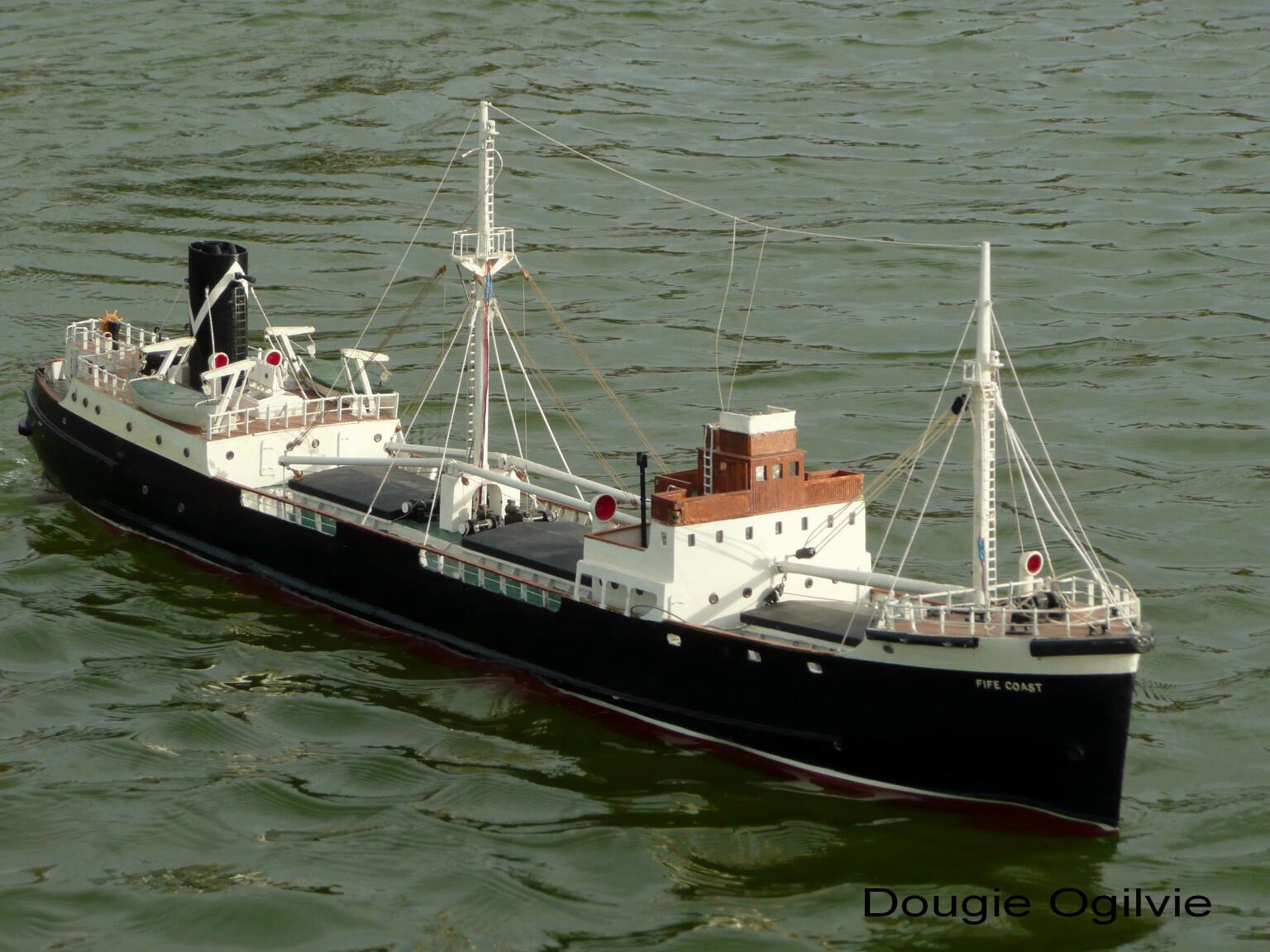
Another shot of the cargo vessel 'Fife Coast' by Dougie Ogilvie.
Fierce and proud!
Roddy Fullarton's magnificent Flower-class corvette HMS Bryony surges through our waters.
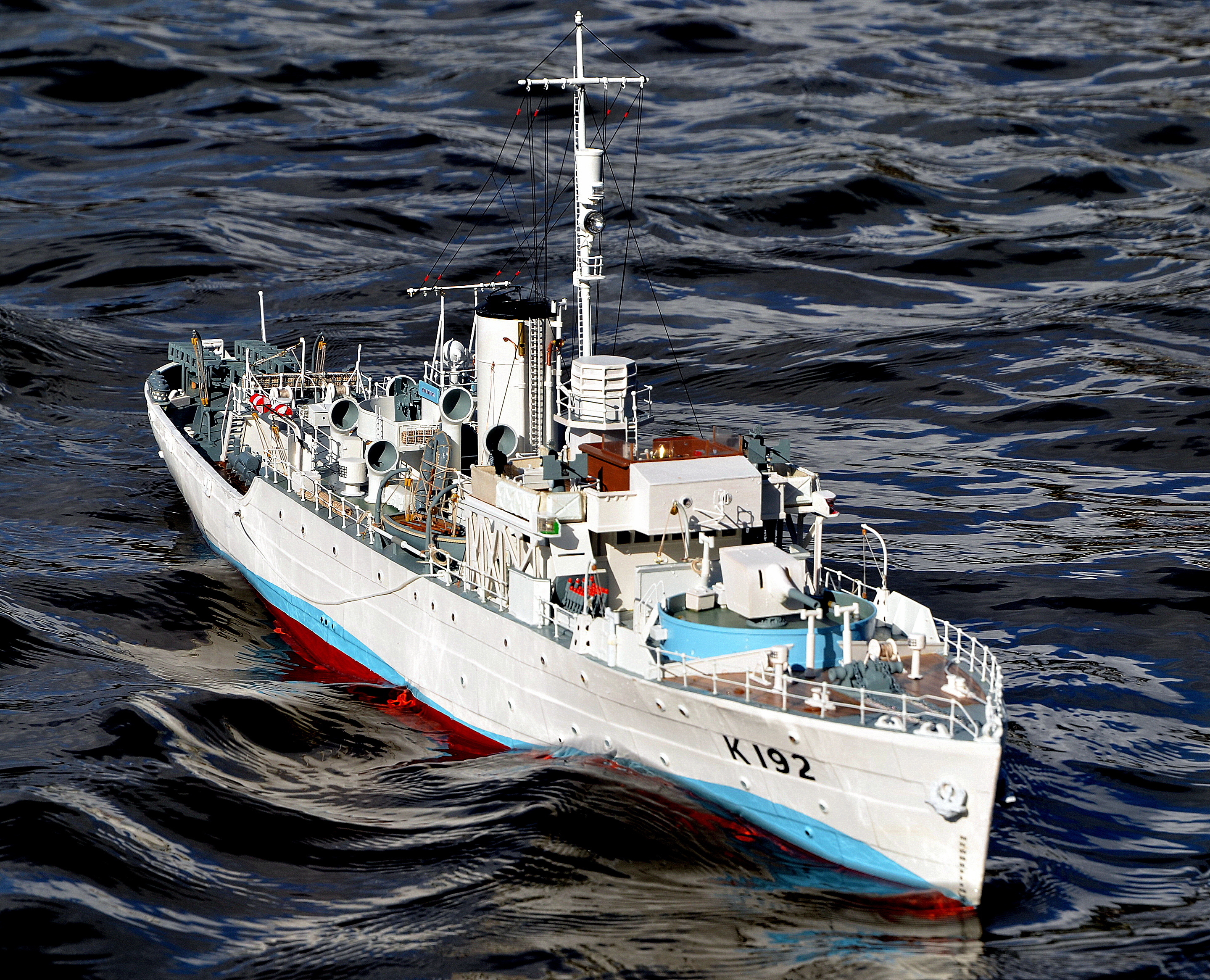

RMS 'Seguin' by David Wright.
The original vessel was built in Bath, Maine. The Seguin spent her first 20 years towing wooden sailing vessels up and down the Kennebec River and towing cargo barges along the Atlantic coast, from Maine to Virginia. In the early 1900s, she became a New York harbour tug, finally returning to an active career in Maine until retiring in 1967. During restoration by the Maine Maritime Museum, her hull was found to be hopelessly rotted, and, with deep regret, the museum scrapped her.
Caldercraft's wonderful 1:32 scale model kit of the old pilot boat 'Cumbrae', originally launched in 1936 with a 325bhp oil-fueled engine and built for the Clyde Pilotage Authority, Glasgow.
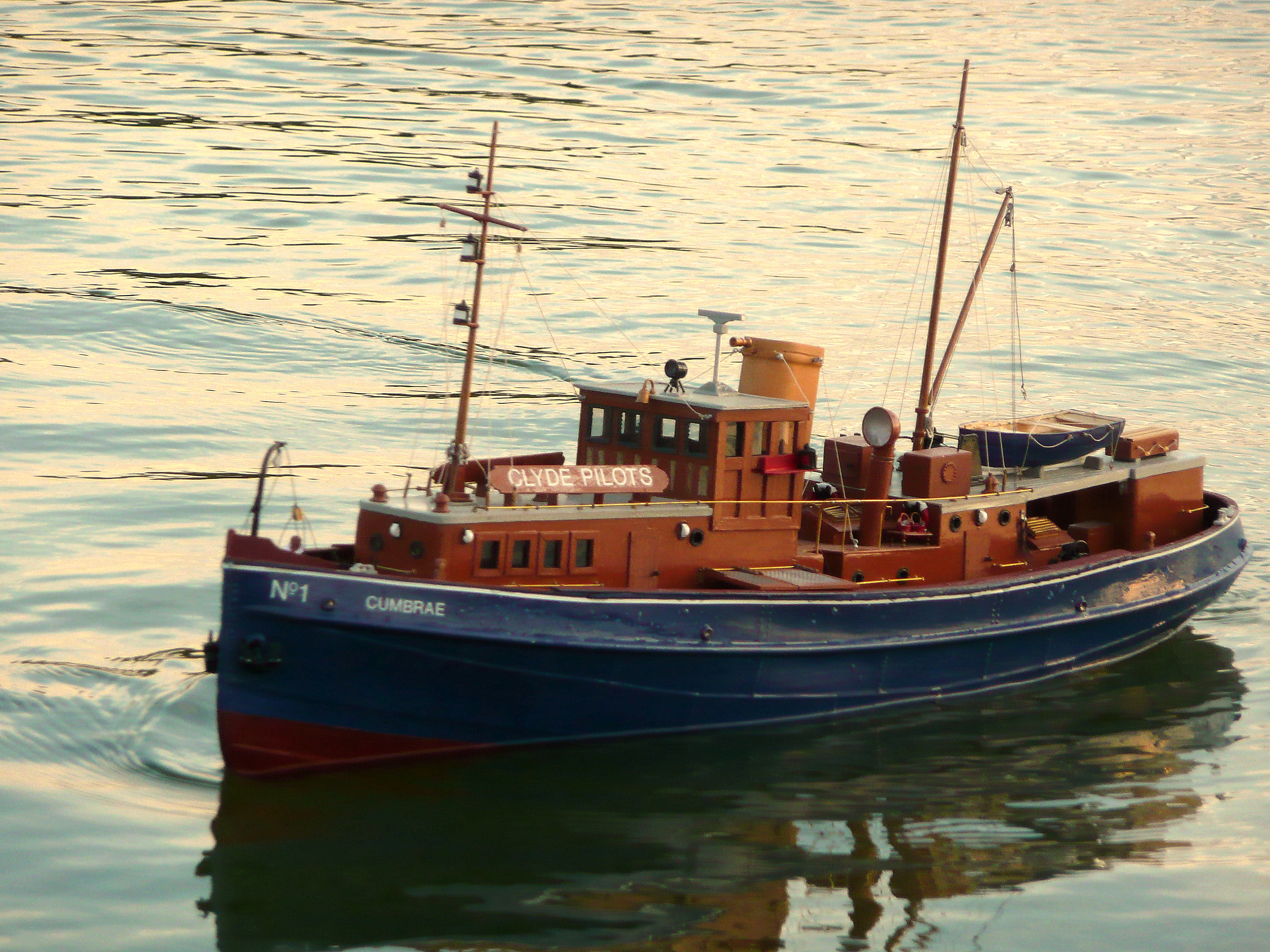
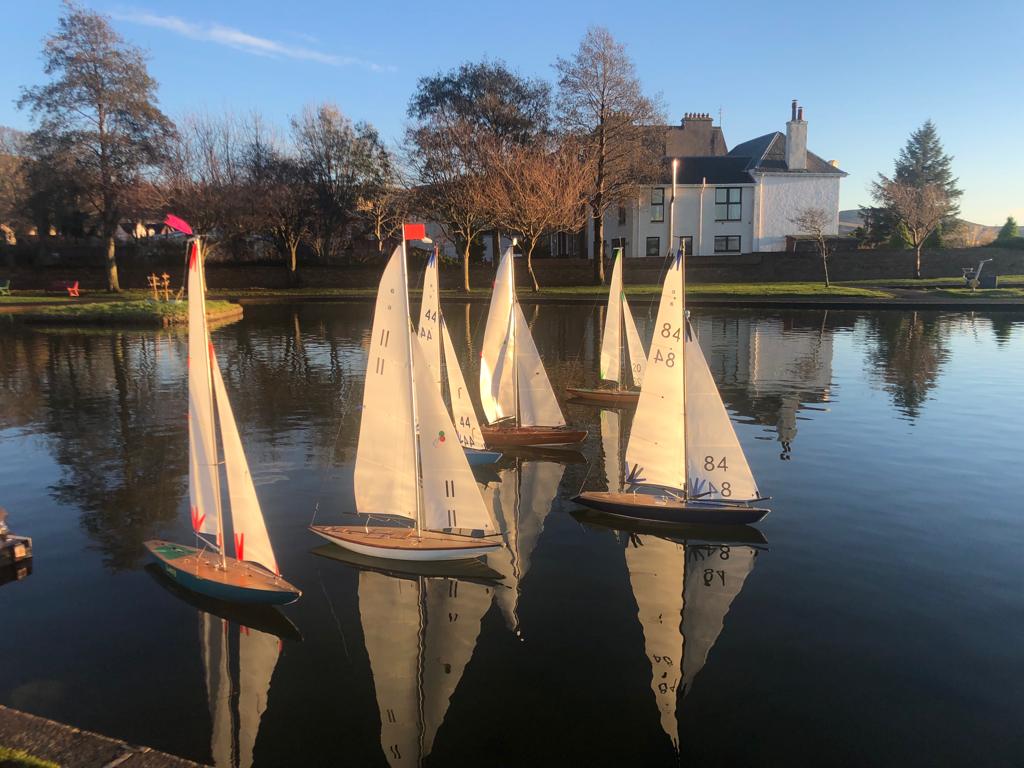
Races around Aubery Park pond between our popular 6-metre class yachts are seen every time our club meets.
John Millar's glorious 19th century steam yacht 'Deerhound'.
The Deerhound was built in 1858 for the Duke of Leeds at the John Laird shipyard Birkenhead. She was a three-masted vessel, built of steel, with a screw-propeller, with a tonnage (builders’ measurement) of about 190, and engines of a nominal power of seventy horses. When in her usual trim she steamed twenty knots,
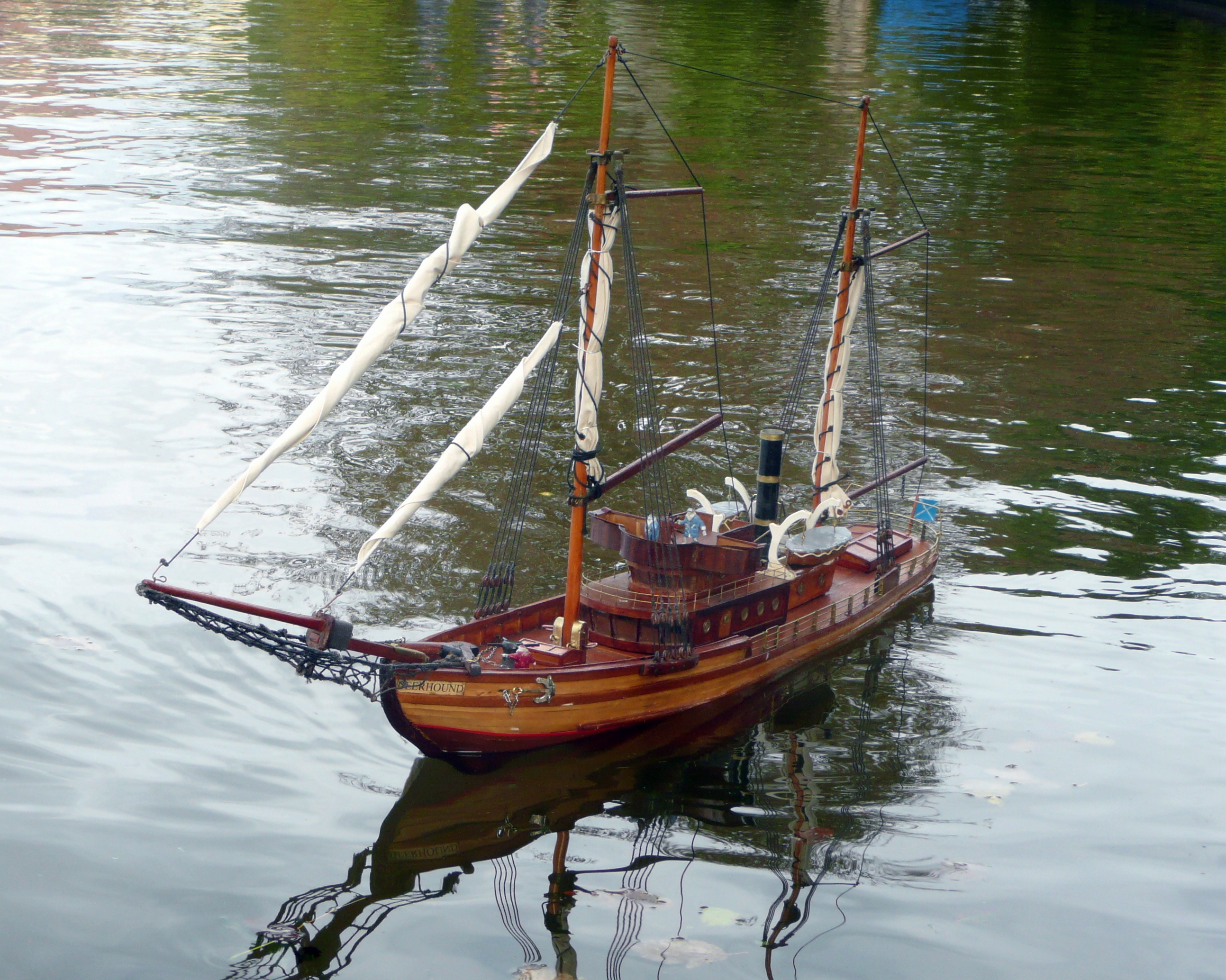
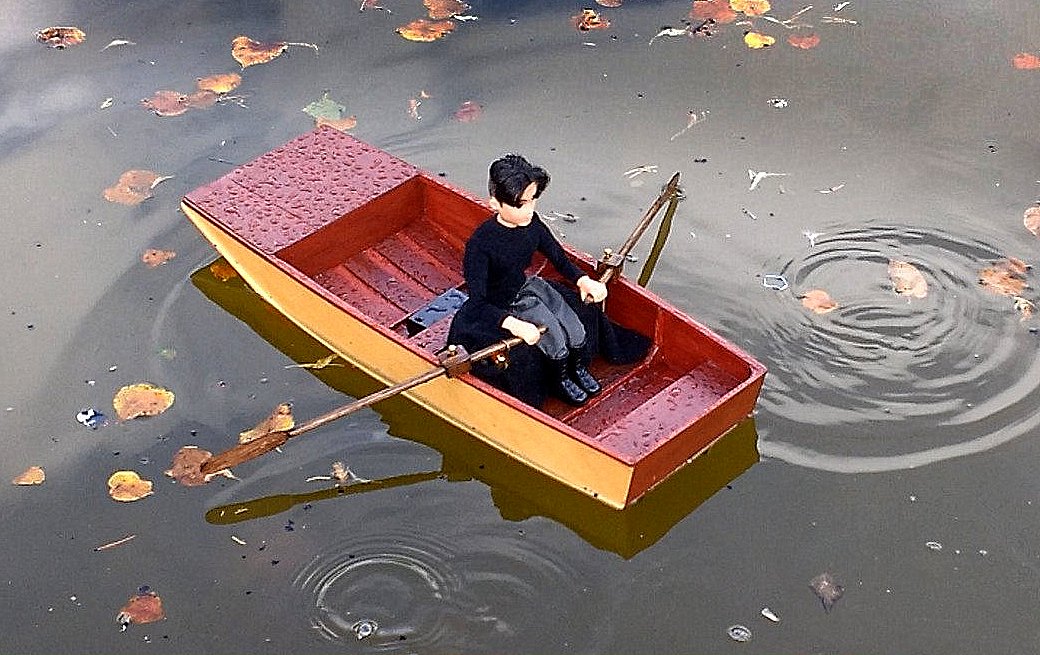
Melvin’s boat was built by Ronnie as a fifth scale model from the plans for a full scale dinghy. Peter added Melvin and his rowing mechanism. There are two recognised ways of building a model rowing mechanism - with servos or motors. The servo method requires a more complicated mechanical design and tends to result in a less smooth rowing action so the motor method was chosen here. Both methods require custom, usually microprocessor controlled, electronics. Each side has a small brushed 280 motor and drives its oar via a divide by 64 reduction gearbox and a crank mechanism. The crank is designed to produce an oar movement which is slower when the oar is in the water than on its return stroke. Each motor’s direction and speed is controlled by its own ESC. They can thus be run individually or together (in the same or opposite directions). The complication with the motor method is the requirement to synchronise the oars when they are both running. To achieve this, each side has a shaft encoder which regularly sends the position of its oar back to the controller. The controller uses the two positions and calculated speeds to synchronise the oars by adjusting the signals to the ESCs. The radio control is arranged with the usual ahead-astern on one channel and port-starboard on a second channel. These signals are mixed to provide the appropriate instruction for each side so that the boat can be controlled in the normal way. With the “throttle” at stop, the boat can be spun on the spot using just the “rudder” channel. There is no rudder.
Melvin and his mechanism can be seen in action HERE and HERE.
Charging galliantly through treacherous seas!
John Scott's HMS Jersey on manouvres at Aubery Park (Operation Stay Afloat).
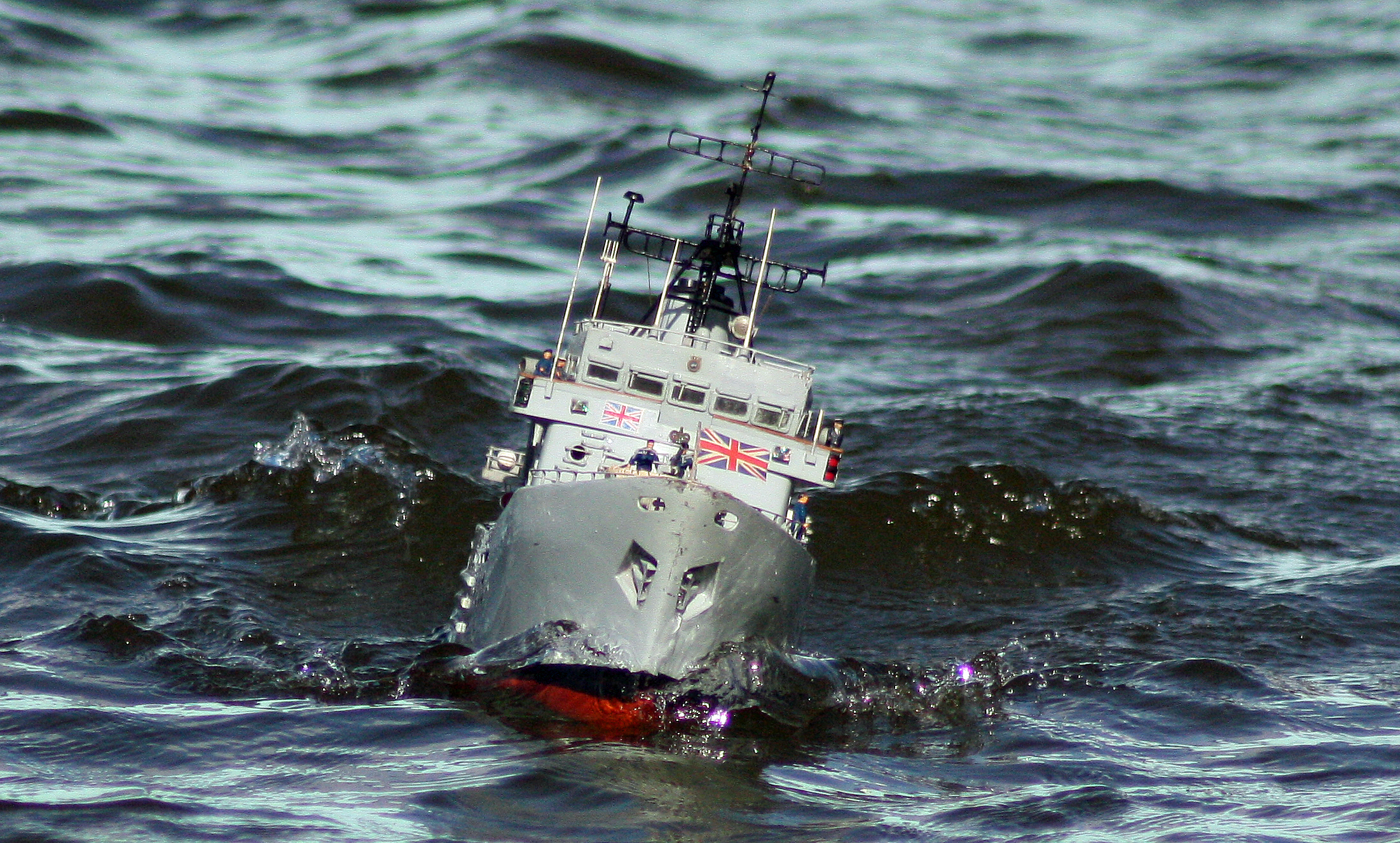

Beyond the reach of night and day, our El Dorado gleams.
Out to seek a Realm of Gold beyond the Spanish Main? This peaceful picture is of Eddie Kerr's 16th century galleon.
"Half Ahead!"
This super-detailed cargo steamer is another of Ronnie Milton's objet d'art. Just as with most the monstrous cargo vesels of today, the bridges were at the aft of the ship. However, along with the fact both types of ship have hulls and float, that's where the similarities end!
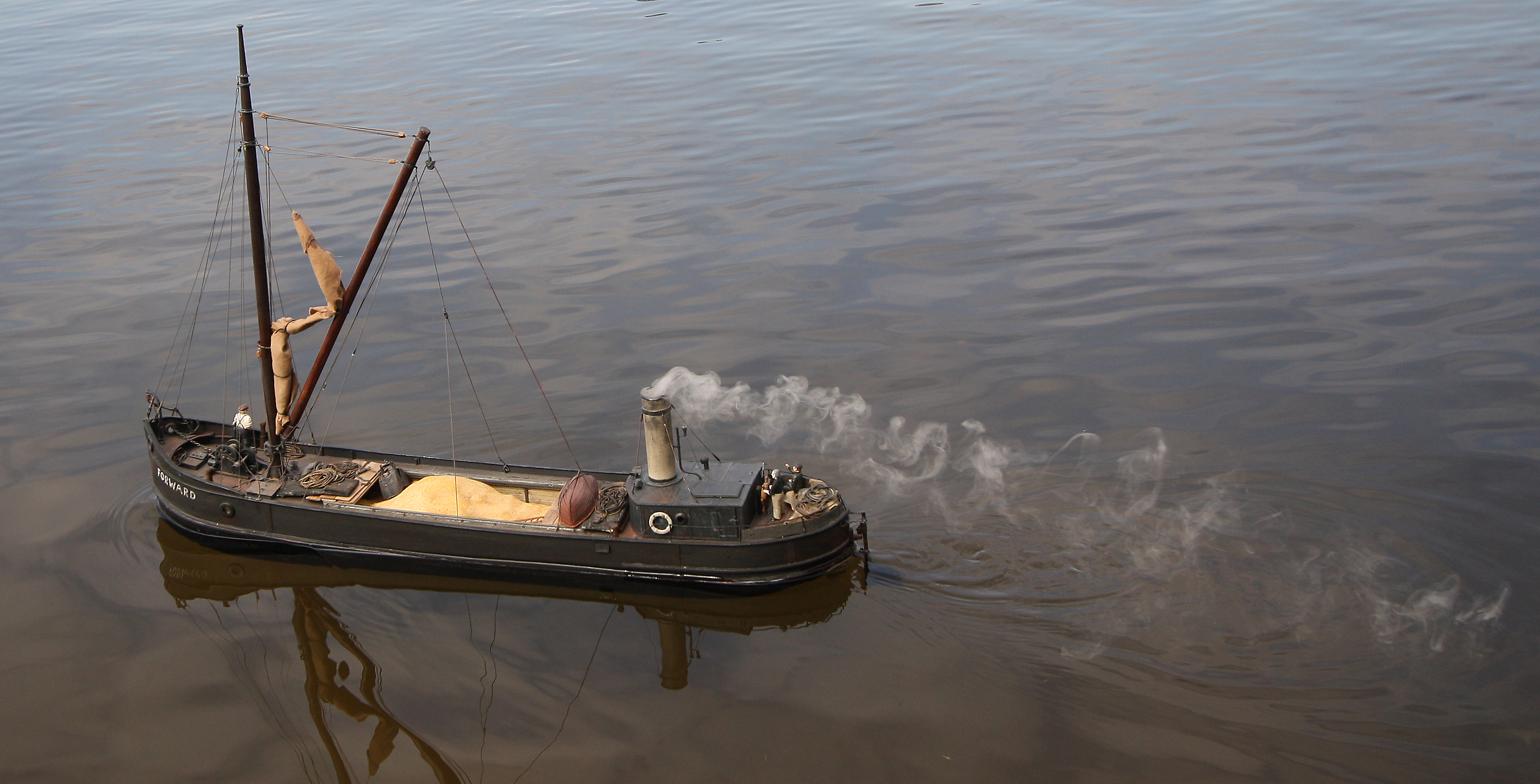
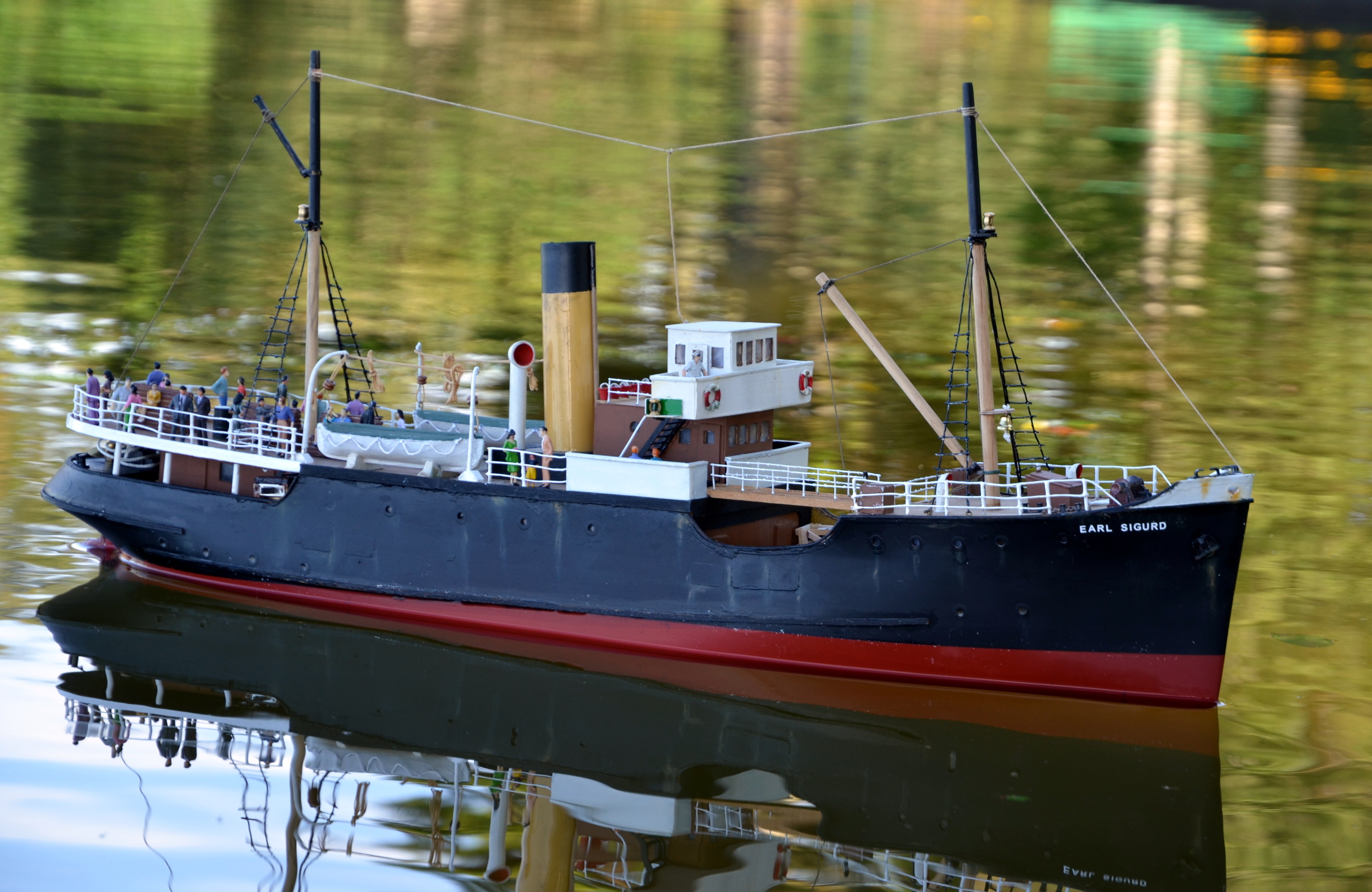
Originally built in 1931 by Hall, Russel & Co. ltd (Aberdeen) for the Orkney Steam Navigation Co ltd and specially for the Kirkwall - Orkney Isles service, this is George Lavery's scale model of the SS Earl Sigurd.
ᛞᛖᛋᛏᚱᚩᛁ ᚦᛖ ᛋᚳᚱᛇᛚᛁᛝ!
Something of a 'flagship' for the club, is Jim Martin's magnificent Viking Longboat.
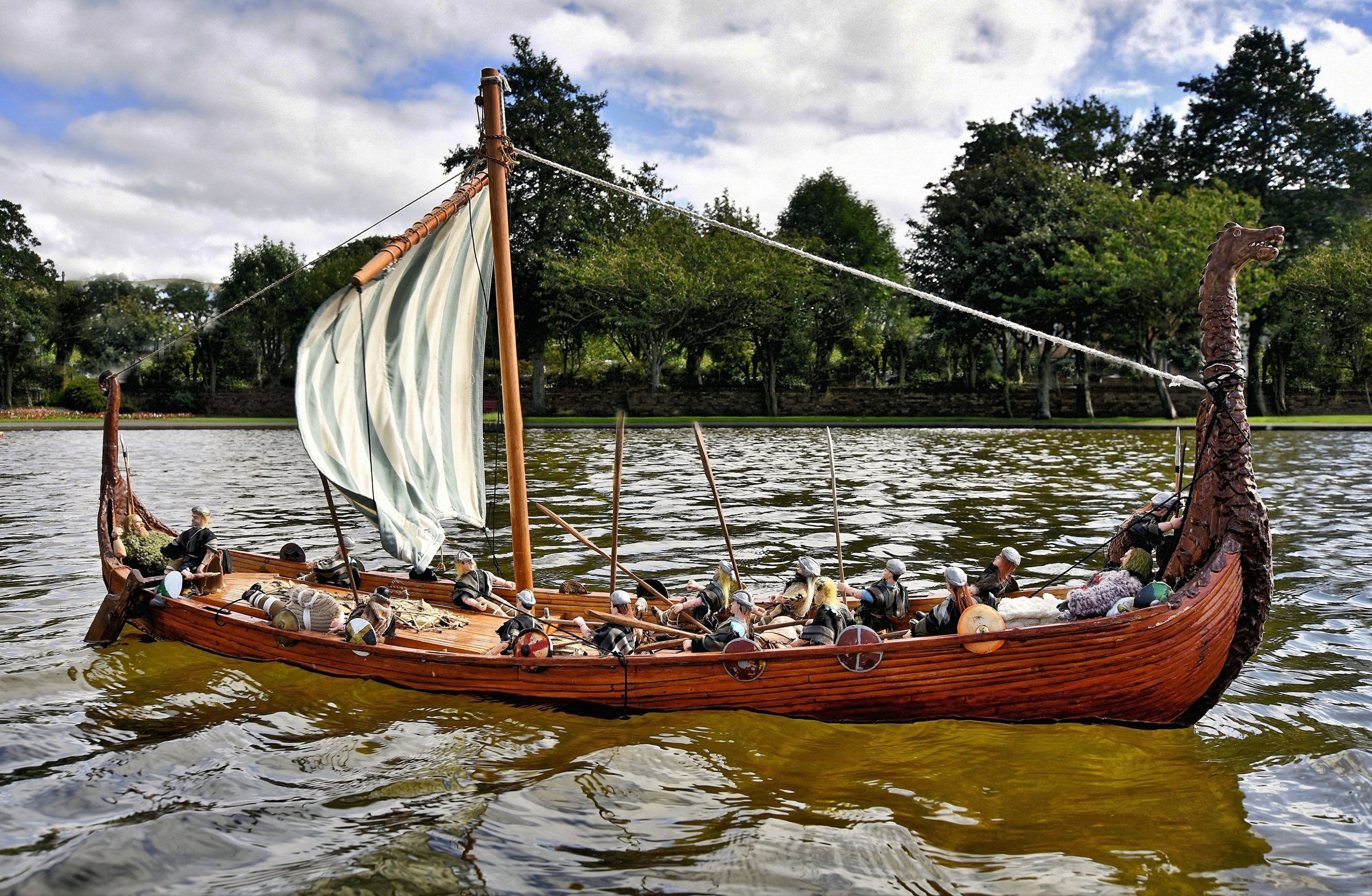

"Arise, Sir Aubery".
Looking every bit the ship of nobility, the club's own steam model 'Sir Aubery' might be the most unique model the club has. A very beautiful working model indeed.
The unmistakeable reflections of Autumn.
Two hard-working Clyde coasters/puffers, one with it's gig in tow, move gracefully along across the calm waters and through the rusty reflections of nearby trees.
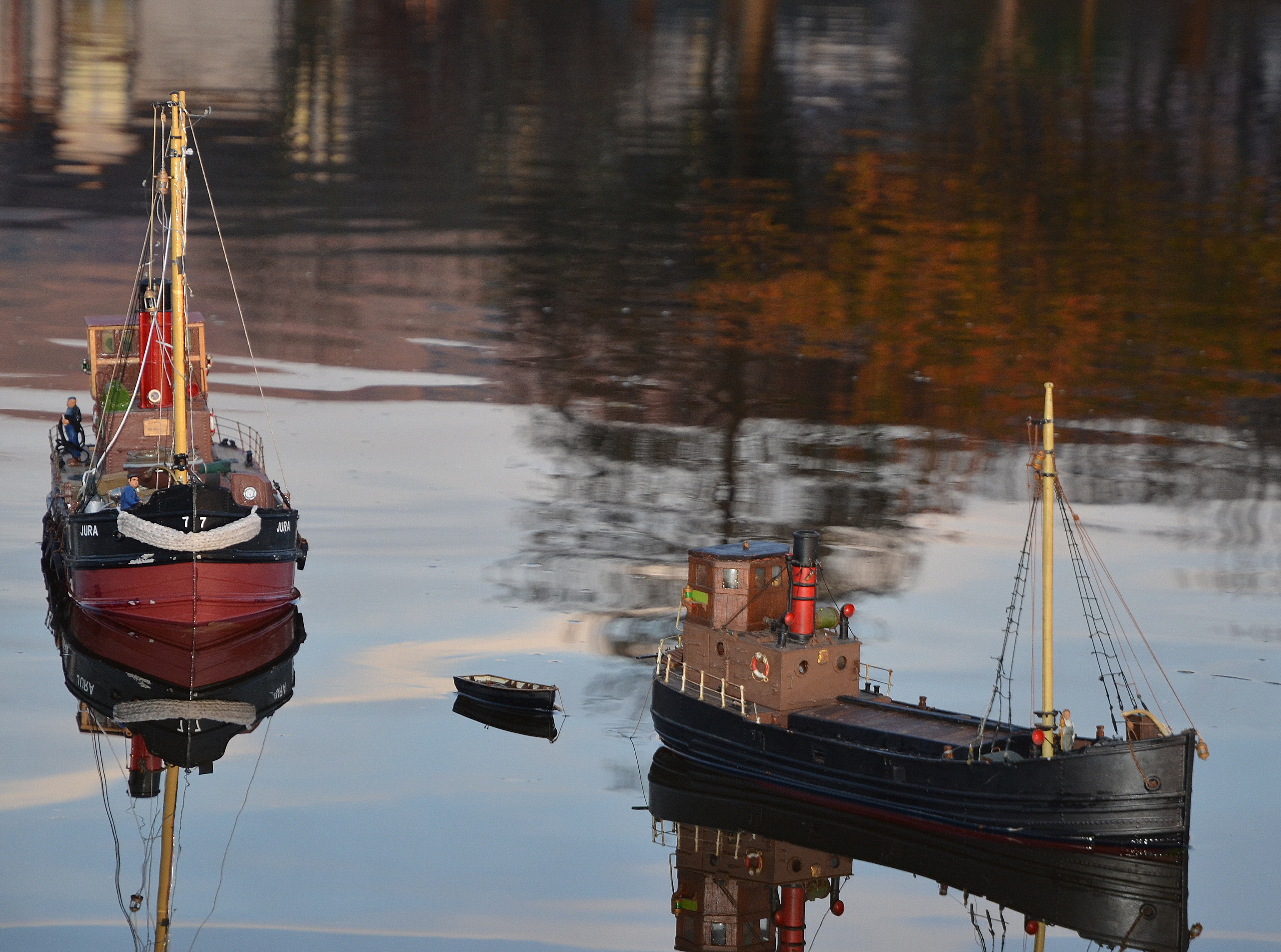

Sailing on molten chrome.
This image, taken in the earliest days of the Spring of 2021 captures the peace and calmness frequently felt in the vicinity of Aubery Park pond.